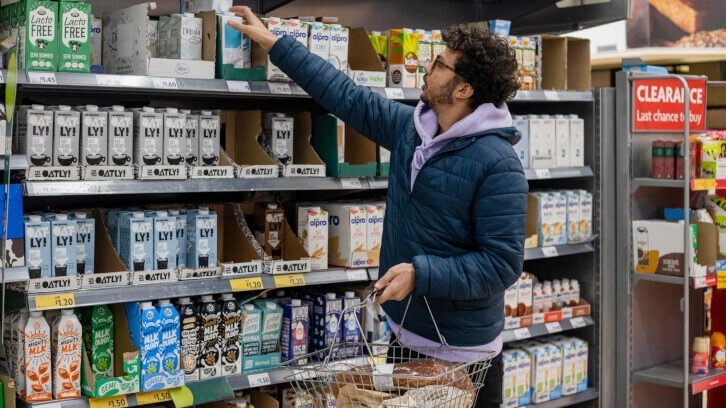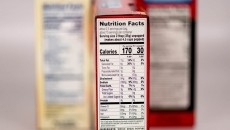Consumers care about sustainability as long as the claims fit the category, experts say

According to McKinsey’s 2020 US consumer sentiment survey, more than 60% of consumers said they would pay more for a product with sustainable packaging. In addition claims around responsibly sourced and zero waste claims resonated with consumers, according to Nielsen IQ (NIQ) Green Divide research.
Further, NIQ reported more growth over the last four years in products with claims on environmental, sustainable packaging, animal welfare, social responsibility than on products without claims – highlighting that sustainable products are not just premium, even if Bar Am said consumers perceive them as such.
“There’s high correlation that brands that people perceive as being more sustainable, they also tend to think of as more premium … but when we ask consumers whether they think certain brands are sustainable, a small number actually qualify and receive that positive view,” he elaborated.
“There are no silver bullet claims. It’s not something that you can formulaically follow. The claims that resonate the most with consumers do vary meaningfully by category… I think there is something to really understanding who the consumer is and what matters to them and tailoring that to your portfolio,” Bar Am explained.
Yet, companies are challenged with pursuing the right claims for their audience without overwhelming or confusing them on the label.
According to KPMG data, 43% of US CEOs reported they have changed how they refer to ESG claims internally and externally, highlighting an opportunity for CPG companies to create more specific language around the types of ESG claims they’re implementing.
He continued, “Many brands are prioritizing the claims they put on [packaging] by both relevance and opportunity in their category and consumer interest.”
While sustainability efforts are less about the number of claims, Bar Am noted that brands should consider spreading these claims across multiple pillars of sustainability: environmental, animal welfare and packaging, among others – as highlighted by NIQ’s data which found that stacking claims across pillars is associated with faster and double growth, with brands reporting that more than half of its sales from ESG-claimed products achieve repeat purchases up to 34%.
Companies fall into three types of sustainability motives
Bar Am posits that companies typically fall into three different buckets of sustainability motives.
First, some companies avoid communicating claims due to concerns that sustainability initiatives will risk losing consumers who are not willing to pay more for sustainable products, or they will appear as less competitive for publicizing sustainable initiatives.
Other companies see sustainability as an opportunity to distinguish themselves in the market and create a unique selling proposition because their consumers are interested in sustainable products and willing to pay more for them.
On a larger scale, an industry can drive sustainability initiatives. This is often the case when there is a major environmental or social issue that affects the entire industry. For example, Bar Am noted, the cocoa industry working to combat deforestation of cacao plantations or the beverage industry working to reduce single-use plastics.
“It’s less about any one company trying to get an advantage and more about how it can collectively raise the bar together so that none … are disadvantaged by doing so,” he added.
Standardization versus differentiation: looking into the plant-based and alternative meat segments
The plant-based and alternative protein categories, which focus on animal-free, reduced reliance on resources, lower carbon and water, among others, are “a bit harder for consumers to differentiate,” Bar Am said.
While companies in these segments are aligning with novel technologies to produce foods that are both nutritious and sustainable, they can run the risk of confusing consumers by communicating the technology and process differently.
“They’re talking about the technology in different ways … [and] calling it different things while trying to create a whole new category of food,” he elaborated.
He commended the cultivated meat industry of “collectively working to create a single name, which was ‘cultivated meat’ instead of ‘cell-based’ or ‘lab meat.’”
Bar Am continued, “Now, the challenge there has been that companies are pushing their own technologies and doing it all a little bit subscale, and the benefit for them is to actually start standardizing their processes and the ingredients [and equipment] they use to get more economies of scale for that sector, so they can drive the cost down and be more competitive in the market for consumers.”
The right combination of claims that fit within the category can contribute to higher sales
Bar Am noted that more claims may produce more sales growth, however, brands must recognize which claims will be valuable to both the consumer and their bottom line.
“Animal welfare seems to matter a lot more in certain categories like dairy than it does in … jerky, for example. Plant-based as a claim didn’t matter as much in salty snacks, all of which tend to be plant-based. But sometimes sustainable packaging did. So, I think it’s just having that thoughtful curation of these authentic claims is really important.”
Bar Am referred to McKinsey and NIQ’s research, for example, that one claim on a package saw 5% sales growth while two claims saw near double growth to 9.4%, while, only a quarter of the sales had two claims. Three claims reached close to 11% growth relative to those without claims, however only 7% of sales have three claims.
“You see a little bit higher growth associated with having the right combination of claims. Our hypothesis is that there’s some authenticity and conscientiousness that gets conferred to the consumers. When brands are curating the right set of claims together, that can be meaningful,” he said.
Bar Am continued, “There did seem to be some authenticity conveyed with the additional claims, but with the caveat that they have to be authentic. It has to fit with the category and with the brand.”

![[Video] Investors ‘wake up’ to reality of food-tech investments, turn attention to sustainability](/var/wrbm_gb_food_pharma/storage/images/_aliases/wrbm_medium/publications/food-beverage-nutrition/foodnavigator-usa.com/article/2024/01/15/video-investors-wake-up-to-reality-of-food-tech-investments-turn-attention-to-sustainability/17079389-1-eng-GB/Video-Investors-wake-up-to-reality-of-food-tech-investments-turn-attention-to-sustainability.png)



















